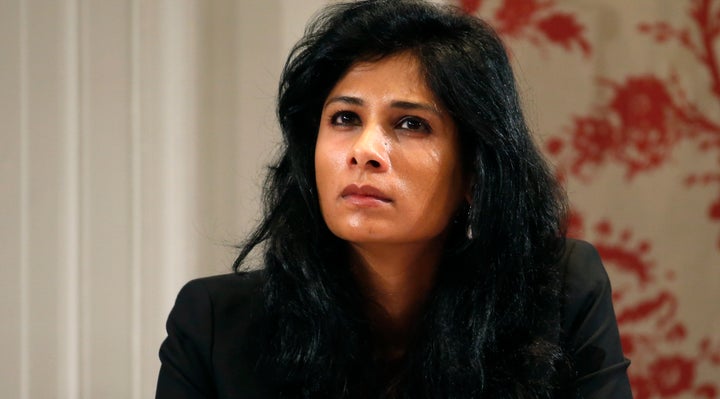
NEW DELHI — The government’s note ban decision shaved off economic growth by at least 2 percentage points for the October-December quarter of 2016 in which the demonetisation move was effected, according to a research paper co-authored by eminent economist Gita Gopinath.
India-born Harvard professor Gopinath (46) is set to take charge as the chief economist at the International Monetary Fund (IMF) next month.
The paper further said that districts experiencing more severe demonetisation had relative reductions in economic activity, faster adoption of alternative payment technologies and lower bank credit growth.
“Our results imply demonetisation lowered the growth rate of economic activity by at least 2 percentage points in the quarter of demonetisation,” said the research paper titled ‘Cash And The Economy: Evidence From India’s Demonetisation’.
The paper is published by US-based National Bureau of Economic Research (NBER) and its co-authors include economist Prachi Mishra, who had headed the strategic research unit at the RBI, Abhinav Narayanan, manager-research at RBI, and Harvard professor Gabriel Chodorow-Reich is the lead author.
According to the paper, note ban also led to a decline in nightlights-based economic activity and a 3 percentage points or more drop in employment generation in November and December of 2016 relative to the counterfactual path.
“The cross-sectional responses cumulate to a contraction in employment and nightlights-based output due to demonetisation of 2 percentage points and of bank credit of 2 percentage points in 2016 Q4 (calendar year) relative to their counterfactual paths, effects which dissipate over the next few months,” the paper said.
Night lights satellite imagery has been seen as an alternative means for measuring economic activity. Night lights-based data rely on a scientific model for reaching at an estimated total economic activities, including formal and informal, for countries and states of the world.
The Indian economy grew at 7 percent in the third quarter (when demonetisation was implemented) of 2016-17 and at 6.1 percent in the subsequent quarter.
In 2017-18, the Indian economy grew by 6.7 percent.
In the six quarters before demonetisation, growth averaged 8 percent and in the seven quarters after, it averaged about 6.8 percent (with a four-quarter window, the relevant numbers are 8.1 percent before and 6.2 percent after).
The paper also noted that cash continues to serve an essential role in facilitating economic activities in modern India.
It also pointed out that there may be longer term advantages from demonetisation that arise from improvements in tax collections and in a shift to savings in financial instruments and non-cash payment mechanisms.
“Evaluating these long-term consequences requires waiting for more data and an empirical strategy suited to the study of longer term effects,” it said.
Prime Minister Narendra Modi in a televised address on 8 November, 2016 had announced to ban the Rs 500 and Rs 1,000 currency notes from the system aimed at curbing black money, fake currency and terror funding, among others.
This policy made 86 percent of cash in circulation illegal tender overnight, with new notes gradually introduced over the next several months.
The authors used a new household survey of employment and satellite data on human-generated nightlight activity to measure demonetisation’s effects at the district level
Gopinath is the second Indian to be appointed to the role of chief economist after Raghuram Rajan.